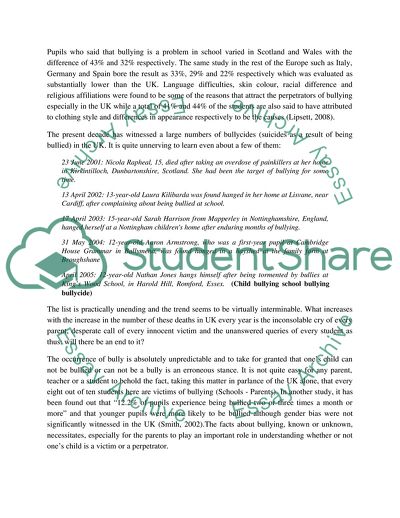Cite this document
(Violence and Bullying in Schools Literature review, n.d.)
Violence and Bullying in Schools Literature review. Retrieved from https://studentshare.org/social-science/1725628-voilenceliterature-review
Violence and Bullying in Schools Literature review. Retrieved from https://studentshare.org/social-science/1725628-voilenceliterature-review
(Violence and Bullying in Schools Literature Review)
Violence and Bullying in Schools Literature Review. https://studentshare.org/social-science/1725628-voilenceliterature-review.
Violence and Bullying in Schools Literature Review. https://studentshare.org/social-science/1725628-voilenceliterature-review.
“Violence and Bullying in Schools Literature Review”. https://studentshare.org/social-science/1725628-voilenceliterature-review.


